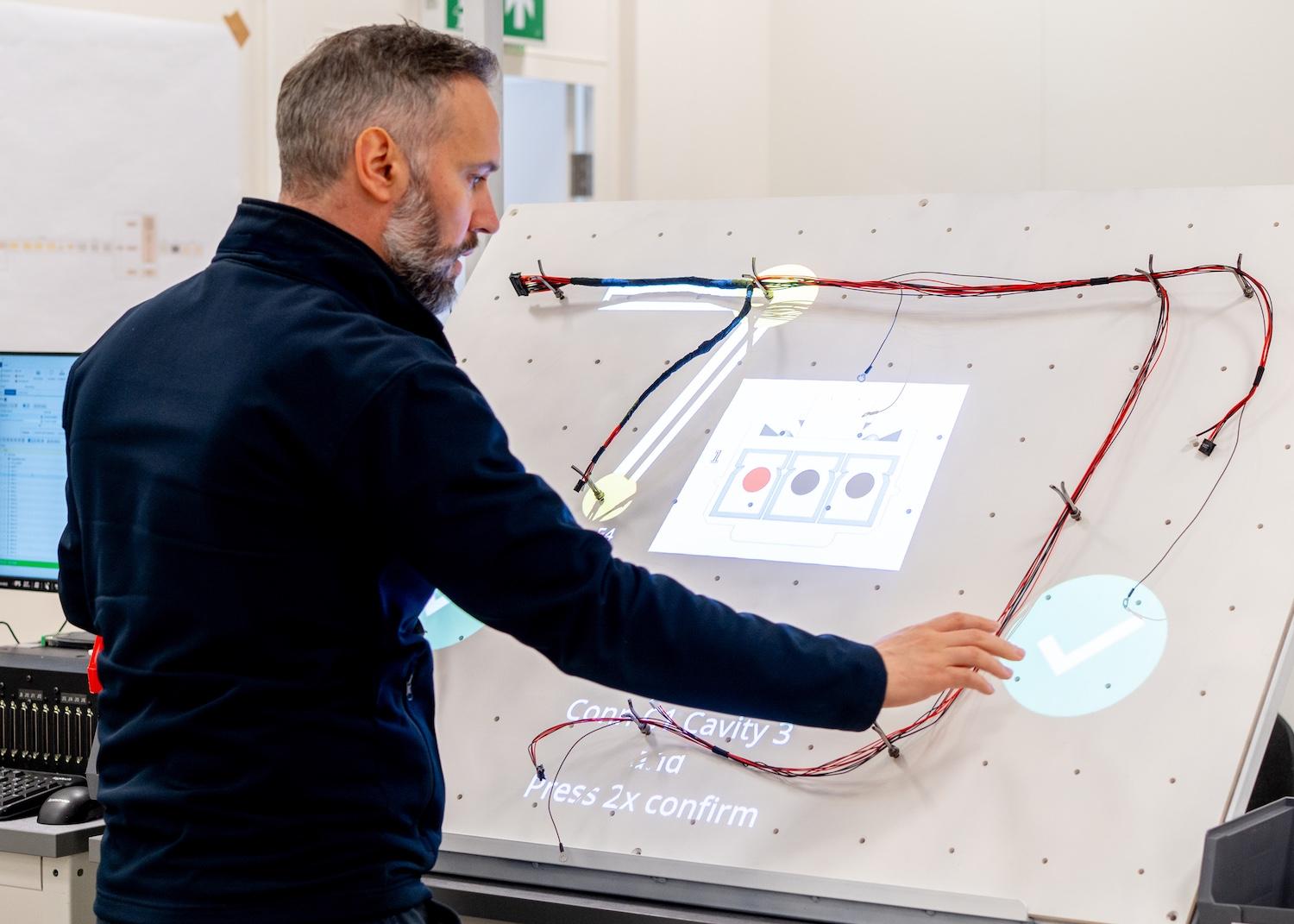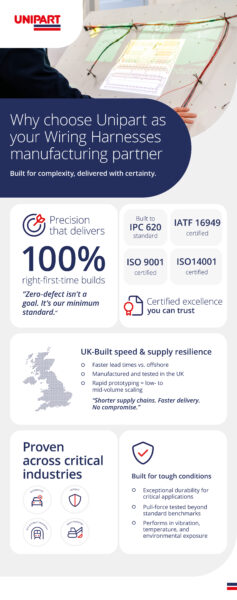When I first stepped onto a wiring harness production line, I was struck by how much these seemingly simple assemblies determine system performance.
Today, in our increasingly electrified world, the wiring harness isn’t just a component, it’s the critical nervous system for everything from next-gen vehicles to defence platforms. As complexity grows, tolerance for error disappears. When your assembly has to work first time, under pressure and in real conditions, how it’s manufactured truly matters.
Why wiring harness innovation matters
Harnesses are evolving as quickly as the systems they support:
- Increasing complexity: EV platforms, autonomous features, and digital upgrades demand harnesses that handle more power and data than ever before.
- Zero-defect requirement: Safety-critical assemblies can’t afford downtime or failure. We must build in reliability from the start.
- Traceability and compliance: Standards like IPC620 aren’t optional, instead, they are foundational for industries where accountability is everything.
What I’ve learned through a recent project
Through one of our recent programmes, supporting the upgrade of connectivity infrastructure for the UK rail network, I saw first-hand the value of building right-first-time harness assemblies that integrate with legacy systems without compromise.
That experience reinforced something I’ve seen across multiple sectors: with the right manufacturing discipline and a zero-defect mindset, we can deliver complex, safety-critical solutions reliably, even in constrained or high-stakes environments.
In fact, innovation isn’t just about new technology; it’s about applying proven principles, like lean thinking and error-proofing, to solve today’s engineering challenges with confidence.
A culture built for precision
Our zero-defect mindset comes from decades of building safety-critical components for demanding industries. We treat every wire, crimp, and connector as if lives depend on it, because often, they do.
That mindset is how we ensure:
- assemblies are built to spec, every time, with full traceability
- we can handle low to mid-volume production without compromising quality
- OEM, retrofit, and aftermarket solutions integrate seamlessly.
Where do we go from here?
Harness reliability will only become more critical as electrification and connectivity accelerate.
I’d love to hear how others are tackling these challenges, whether you’re innovating in EV platforms, defence systems, or retrofitting legacy rail assets.



